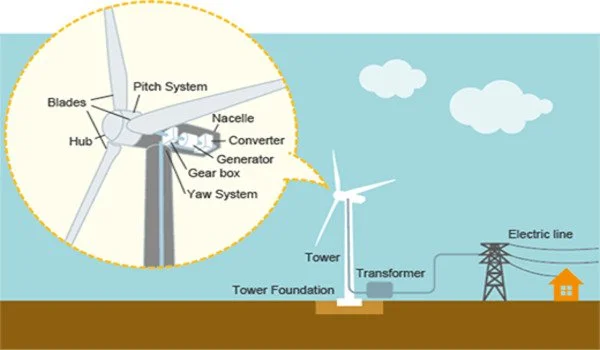Fake plants are coming into the twenty-first century! Researchers created real “power plants”—tiny, leaf-shaped generators that generate electricity from a blowing breeze or falling raindrops—and described them in ACS Sustainable Chemistry and Engineering. The researchers put the energy harvesters to the test by putting them into fake plants.
Nature can produce electrical energy in a variety of ways. Solar panels, for example, convert light energy from the sun, whereas wind turbines convert the kinetic energy of flowing air. However, these strategies often rely on a single source and so are only useful while that source is available. Solar panels, for example, do not work after dark, while a quiet day produces little wind power.
The researchers developed two types of energy collectors: a triboelectric nanogenerator (TENG) that captures wind kinetic energy and a droplet-based energy generator (DEG) that collects energy from droplets.
More recently, multi-source energy harvesters have arisen as a way to gather energy from multiple renewable sources in a single device, boosting potential output. So Ravinder Dahiya and his colleagues set out to design a multi-source energy harvester capable of producing electricity from both wind and rain.
The researchers developed two types of energy collectors: a triboelectric nanogenerator (TENG) that captures wind kinetic energy and a droplet-based energy generator (DEG) that collects energy from droplets. The TENG was made out of nylon nanofibers sandwiched between layers of Teflon™ and copper electrodes. When the layers pressed against each other, static charges were created and transformed into electricity.

Teflon was also used to make the DEG, which was waterproofed and covered with a conductive fabric to act as the electrodes. As raindrops hit one of the electrodes, it caused an imbalance in charges, generating a small current and high voltage. Under optimal conditions, the TENG produced 252 volts of power and the DEG 113 volts, but only for short periods of time.
The team affixed the DEG to the TENG and inserted leaf-shaped variants into an artificial plant. When the leaf-shaped generators were exposed to conditions that simulated natural wind and rain, they powered 10 LED lights in short flickers. The researchers believe that their proof-of-concept “power plant” gadget might be expanded into larger systems or networks of power plants to generate clean energy from natural sources.
















